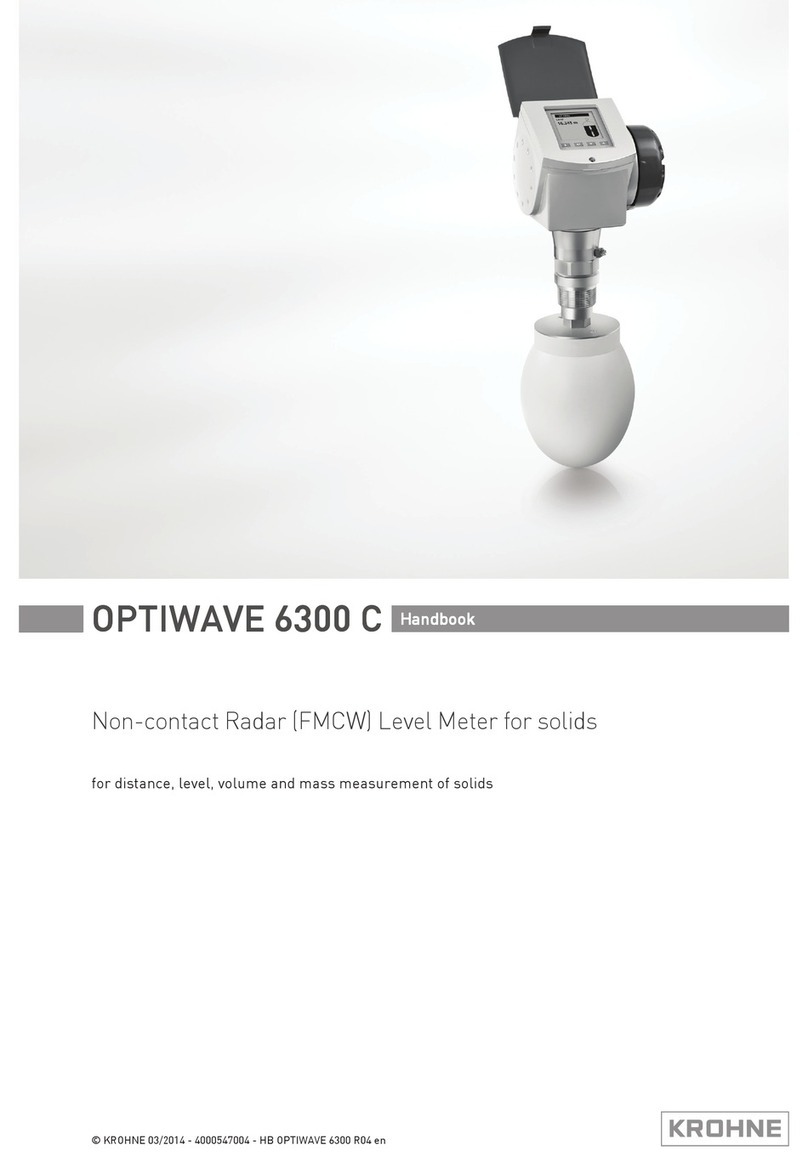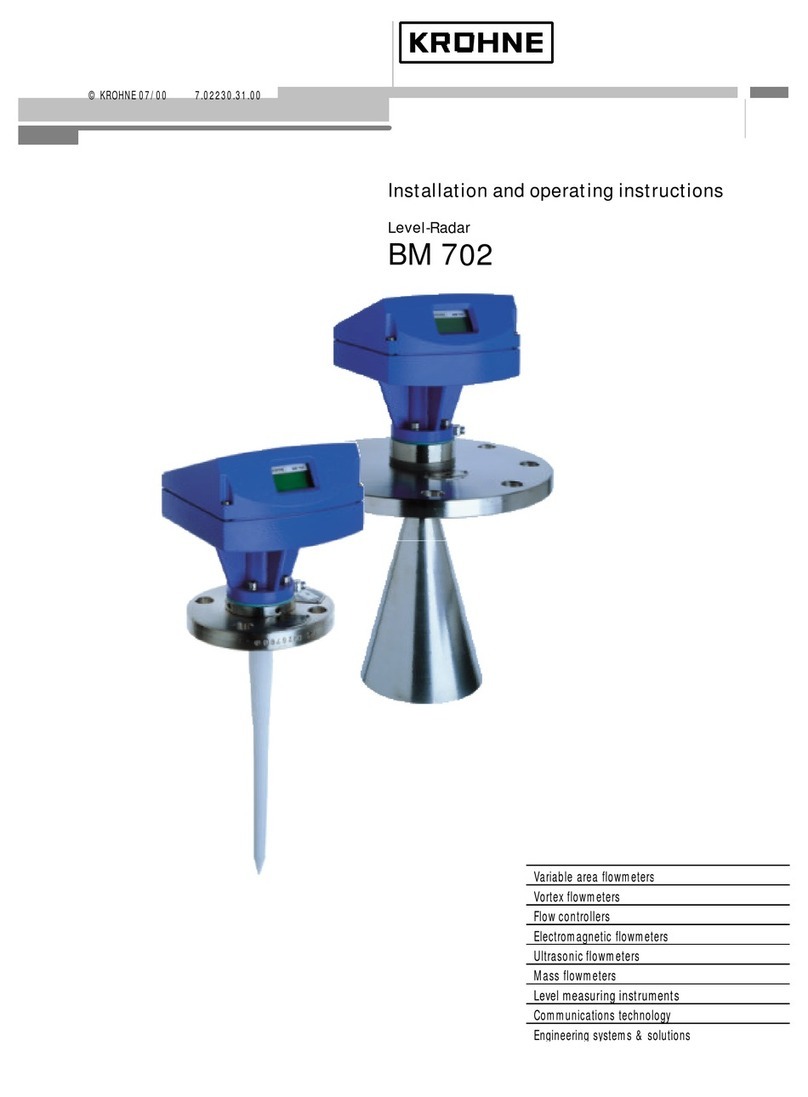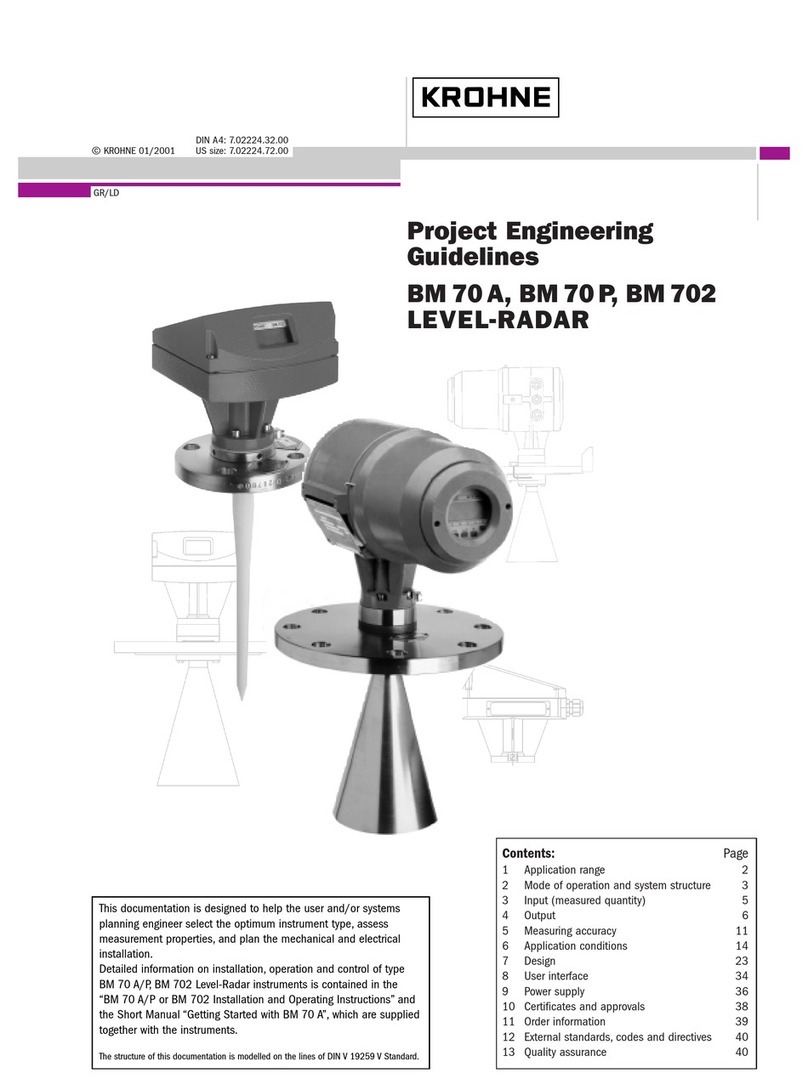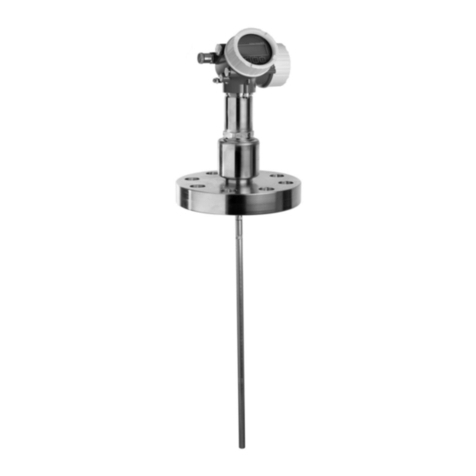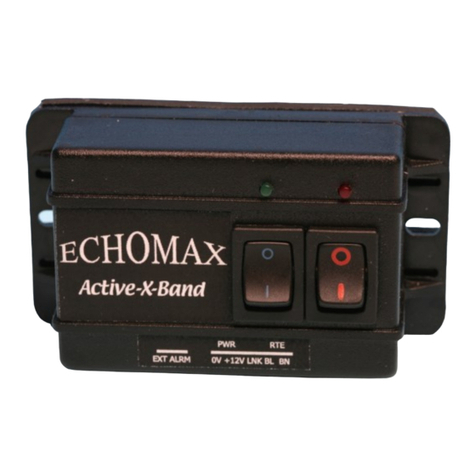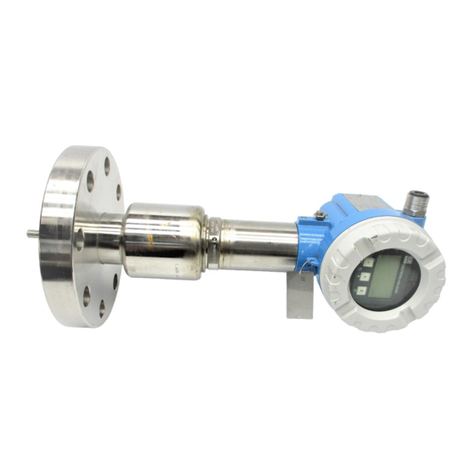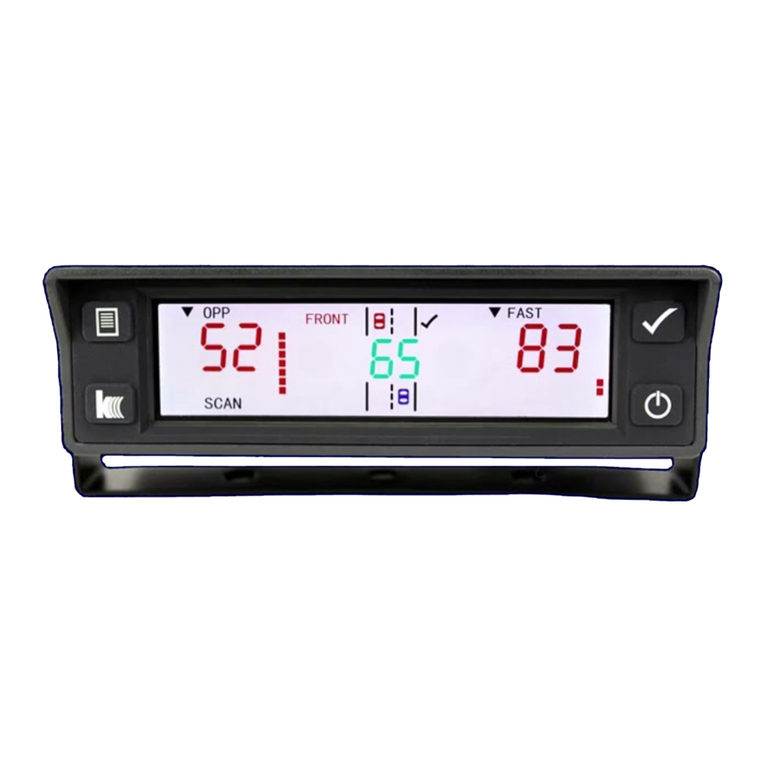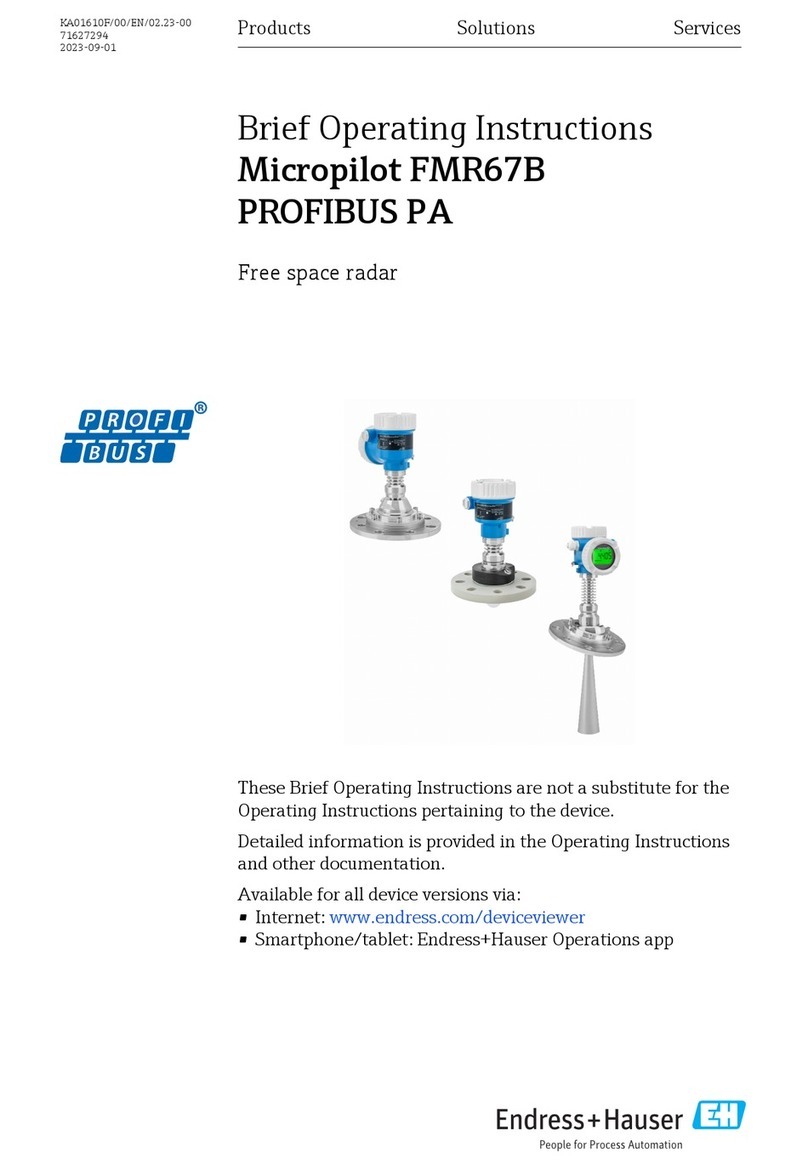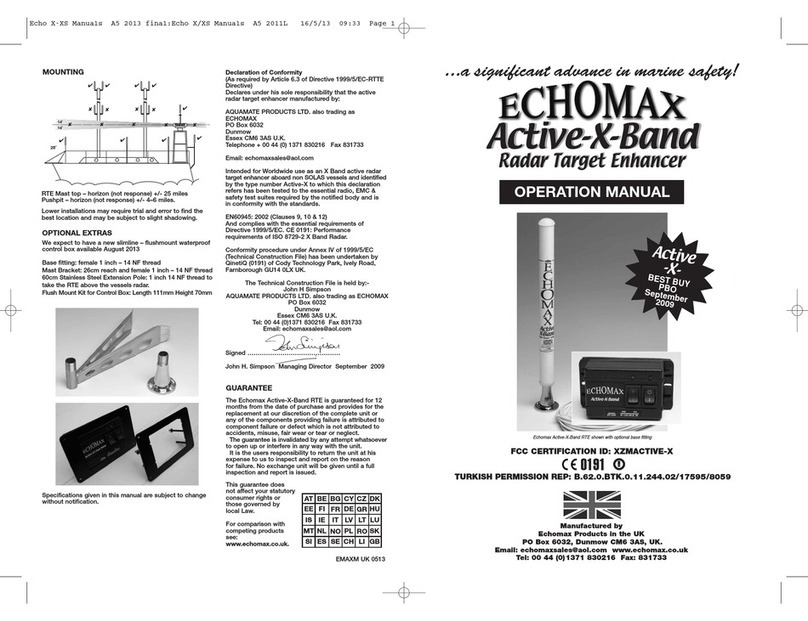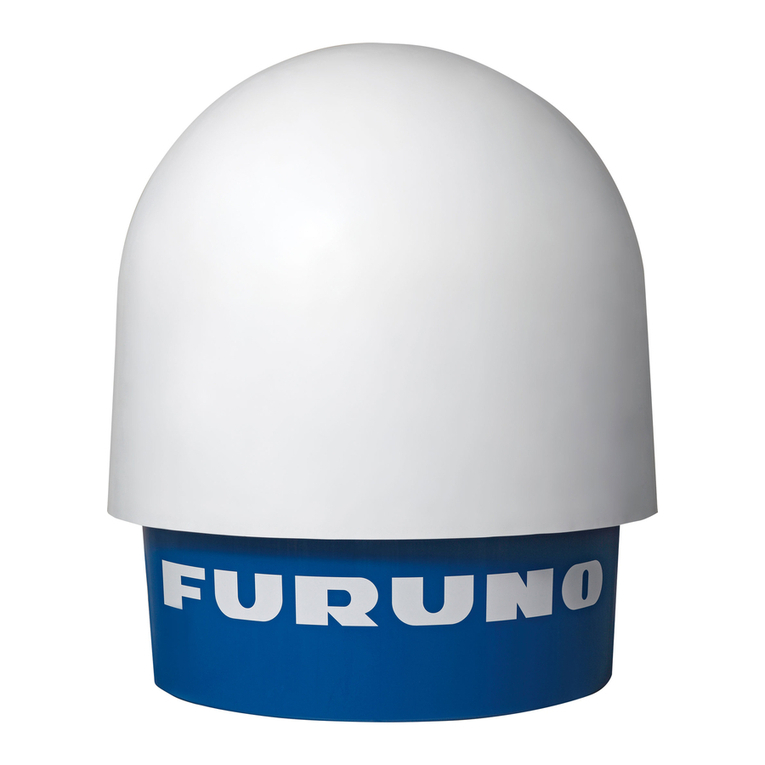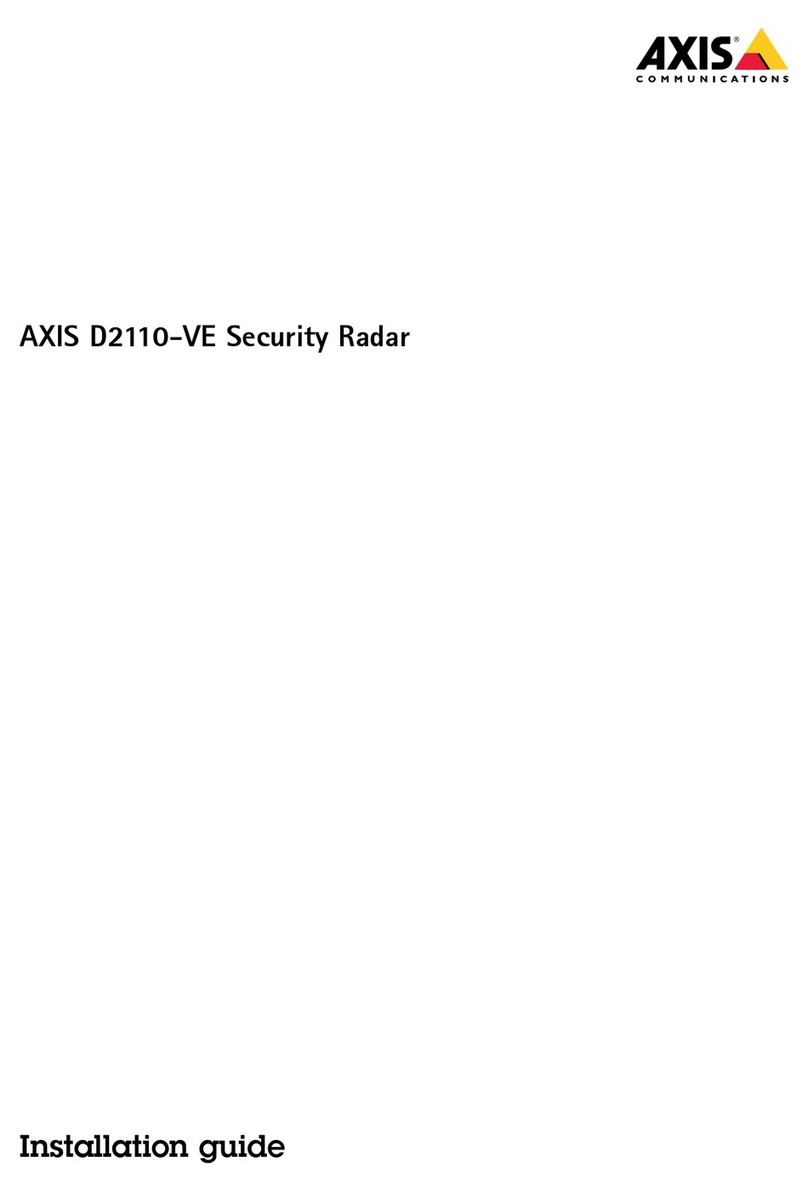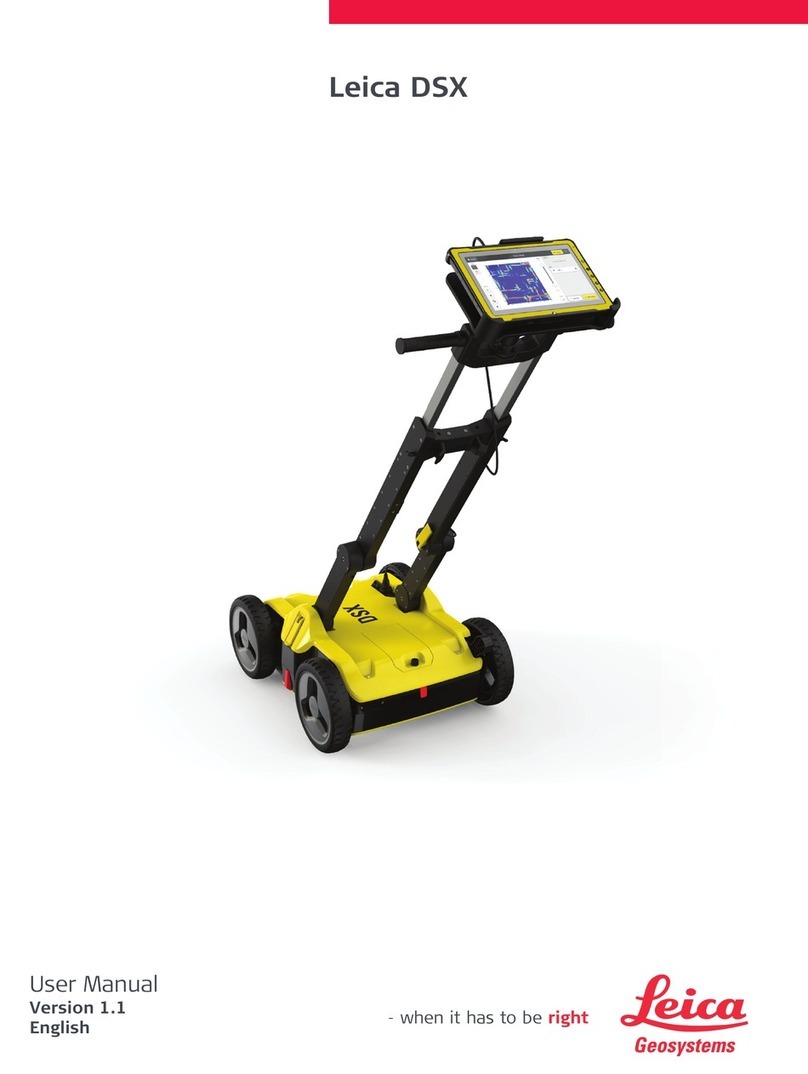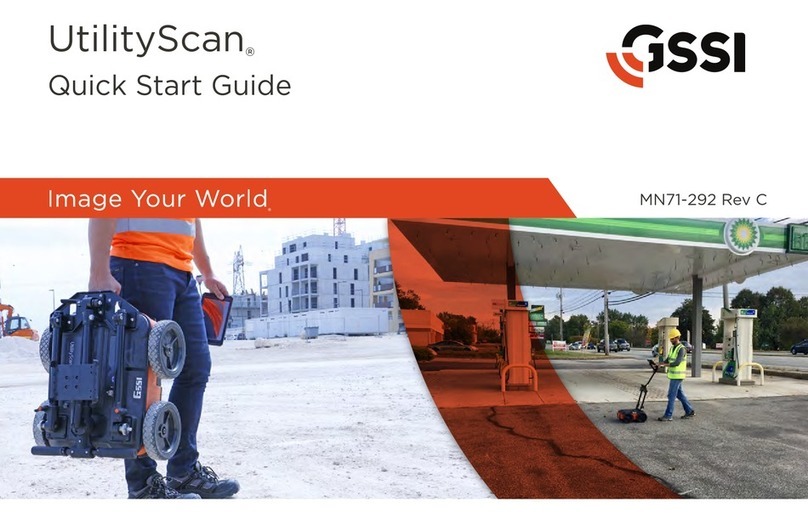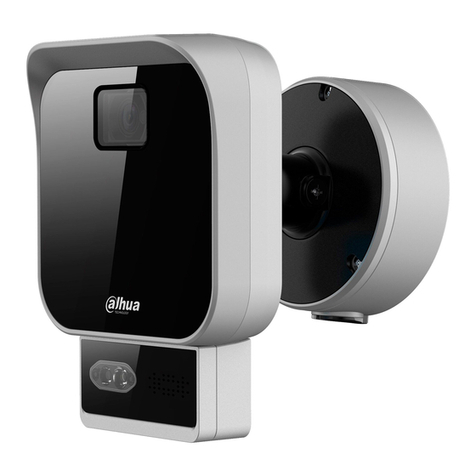KROHNE OPTIFLEX 2200 C Wiring diagram

Guided Radar (TDR) Level Transmitter for storage and
process applications
Safety manual
Safety manualSafety manual
Safety manual
OPTIFLEX 2200 C
OPTIFLEX 2200 COPTIFLEX 2200 C
OPTIFLEX 2200 C Supplementary instructions
Supplementary instructionsSupplementary instructions
Supplementary instructions
© KROHNE 01/2015 - 4000738604 - AD SIL OPTIFLEX 2200 R04 en

CONTENTS
2
www.krohne.com 01/2015 - 4000738604 - AD SIL OPTIFLEX 2200 R04 en
OPTIFLEX 2200 C
1 Introduction 4
1.1 Scope of the document..................................................................................................... 4
1.2 Revision history ................................................................................................................ 4
1.3 Device description ............................................................................................................ 5
1.4 Related documentation .................................................................................................... 5
1.5 Terms and definitions....................................................................................................... 6
2 System description 7
2.1 Peripheral equipment ...................................................................................................... 7
2.2 Software for use with the device...................................................................................... 7
3 Installation 8
4 Electrical connection 9
5 Start-up 10
5.1 General notes ................................................................................................................. 10
5.2 Device parameters ......................................................................................................... 10
6 Specification of safety function 11
6.1 Preliminary requirements.............................................................................................. 11
6.2 Safety function definition................................................................................................ 11
6.2.1 General notes........................................................................................................................ 11
6.2.2 Limits of application.............................................................................................................. 11
6.2.3 Safety function characteristics ............................................................................................. 12
7 Operation 13
7.1 Conditions of use ............................................................................................................ 13
7.2 Failure state ................................................................................................................... 13
7.3 Operation mode .............................................................................................................. 14
7.4 Error conditions.............................................................................................................. 15
7.5 User parameters ............................................................................................................16
7.5.1 Limits for supervisor menu functions related to probe configuration ................................ 16
7.5.2 Limits for supervisor menu functions related to device configuration ............................... 17
8 Service 19
8.1 Periodic maintenance..................................................................................................... 19
8.2 Keep the device clean..................................................................................................... 19
8.3 Availability of services .................................................................................................... 19
8.4 Proof tests ...................................................................................................................... 19

CONTENTS
3
www.krohne.com01/2015 - 4000738604 - AD SIL OPTIFLEX 2200 R04 en
OPTIFLEX 2200 C
8.5 Calibration procedure .................................................................................................... 22
8.5.1 General notes........................................................................................................................ 22
8.5.2 Current output check............................................................................................................ 23
8.5.3 Measuring range check (in process conditions) .................................................................. 24
8.6 Troubleshooting.............................................................................................................. 25
8.7 Returning the device to the manufacturer..................................................................... 25
8.7.1 General information.............................................................................................................. 25
8.7.2 Form (for copying) to accompany a returned device............................................................ 26
9 Technical data 27
9.1 General notes ................................................................................................................. 27
9.2 Assumptions ................................................................................................................... 27
9.3 Characteristics for the device safety function ............................................................... 28
9.4 SIL-specific technical data ............................................................................................. 29
9.5 Support for SIL-approved devices.................................................................................. 30
10 Appendix 31
10.1 Start-up report ............................................................................................................. 31
10.2 Proof test report form (for copying) ............................................................................. 32
11 Notes 33

1
INTRODUCTION
4
OPTIFLEX 2200 C
www.krohne.com 01/2015 - 4000738604 - AD SIL OPTIFLEX 2200 R04 en
1.1 Scope of the document
This document supplies functional safety data about the device. This data agrees with the
IEC 61508 standard.
1.2 Revision history
WARNING!
The data in this supplement only contains the data applicable to the SIL approval. The technical
data for the standard version in the handbook (document [N1]) shall be valid in its current
version, provided that it is not rendered invalid or replaced by this supplement.
INFORMATION!
Installation, commissioning and maintenance may only be carried out by approved personnel.
Edition Date Description
1June 1, 2012 First issue.
2June 13, 2012 Correction of characteristics for the device safety function.
3January 31, 2013 New edition (2010) of the international standard IEC 61508.
4January 30, 2014 Firmware version (converter) changes from 1.06.02 to 1.08.04.
Firmware version (sensor) changes from 1.21.02 to 1.22.03.

INTRODUCTION
1
5
OPTIFLEX 2200 C
www.krohne.com01/2015 - 4000738604 - AD SIL OPTIFLEX 2200 R04 en
1.3 Device description
This device is a 2-wire level transmitter that uses TDR (Time Domain Reflectometry) / Guided
Radar technology. It measures the distance of liquids, liquid gases, pastes, powders, slurries
and granular products.
Measurements are given through a 4...20 mA current output and can be displayed via a DTM
(device type manager) for remote communication or an integrated display screen with wizard-
driven set-up and online help functions. Only the 4...20 mA current output is used as the safety
function.
When the device detects a measurement error, it supplies an output current less than 3.6 mA.
Although the device can be set to a high error value (≥21 mA), some hardware failures can cause
the device to give a low error value (≤3.6 mA). For more data, refer to
Limits for supervisor
menu functions related to device configuration
on page 17 (2.4.2 RANGE I).
Refer also to "Device description" in the handbook (document [N1]).
1.4 Related documentation
INFORMATION!
The manufacturer designed and developed the device for safety integrity level (SIL) 2.
Data for the SIL approval is not taken from field experience (i.e. it is not
“
proven in use
”
) because
this method can give unrealistic data if assumptions are too optimistic.
[N1] OPTIFLEX 2200 Handbook
[N2] IEC 61508-1 to 7:2010 Functional safety of electrical / electronic / programmable
electronic safety-related systems
[N3] NAMUR Recommendation NE 043 Standardization of the Signal Level for the Failure
Information of Digital Transmitters
[N4] NAMUR Recommendation NE 053 Software of Field Devices and Signal Processing
Devices with Digital Electronics
[N5] OPTIFLEX 2200 Supplementary Instructions for ATEX applications

1
INTRODUCTION
6
OPTIFLEX 2200 C
www.krohne.com 01/2015 - 4000738604 - AD SIL OPTIFLEX 2200 R04 en
1.5 Terms and definitions
DC
D
Diagnostic Coverage of dangerous failures
Firmware Software embedded in the device.
FIT Failure In Time (1×10
-9
failures per hour)
FMEDA Failure Modes, Effects and Diagnostics Analysis
HFT Hardware Fault Tolerance
High demand or
continuous mode Where the frequency of demands for operation made on a safety-related system
is greater than one time per year
I/O Input / output
λ
DD
Rate for dangerous detected failure
λ
DU
Rate for dangerous undetected failure
λ
SD
Rate for safe detected failure
λ
SU
Rate for safe undetected failure
Low demand mode Where the frequency of demands for operation made on a safety-related system
is no greater than one time per year
MTBF Mean Time Between Failures
MTTF Mean Time To Failure
MTTR Mean Time To Recovery
PFD
AVG
Average Probability of Failure on Demand
PFH Probability of a dangerous Failure per Hour
Process safety time The time interval between a potentially dangerous failure and an error value
from the current output.
SFF Safe Failure Fraction
SIL Safety Integrity Level
SIS Safety Instrumented System
TDR Time Domain Reflectometry. The measuring principle. For more data, refer to
“Technical Data”in the handbook (document [N1]).
TBF Tank bottom following. A device measurement mode. For more data, refer to
“Technical Data”in the handbook (document [N1]).
Type A system "Non-complex" system (all failure modes are well defined). For more data, refer
to subsection 7.4.3.1.2 of IEC 61508-2.
Type B system "Complex" system (all failure modes are not well defined). For more data, refer
to subsection 7.4.3.1.2 of IEC 61508-2.
T[Proof] Proof Test Interval
T[Repair] Time to Repair
T[Test] Internal Diagnostics Test Interval
1oo1 1 out of 1 channel architecture (single architecture performs the safety function)
1oo1D 1 out of 1 channel architecture with diagnostics

SYSTEM DESCRIPTION
2
7
OPTIFLEX 2200 C
www.krohne.com01/2015 - 4000738604 - AD SIL OPTIFLEX 2200 R04 en
2.1 Peripheral equipment
You can use the device with the equipment that follows:
•A logic solver that can read 4...20 mA current input and low error alarm signals
•A PC or workstation (this is used only to change parameters)
•A HART
®
Handheld Controller (this is used only to change parameters)
For more data, refer to "Start-up" in the handbook (document [N1]).
2.2 Software for use with the device
You can change device parameters with the software that follows:
•PACTware™
•AMS™Device Manager
For more data, refer to "Start-up" in the handbook (document [N1]).

3
INSTALLATION
8
OPTIFLEX 2200 C
www.krohne.com 01/2015 - 4000738604 - AD SIL OPTIFLEX 2200 R04 en
If the device was delivered without a probe, then calibrate the device to make sure that the safety
function operates correctly. This maintenance task must be done and recorded by approved
personnel. For more data, refer to
Calibration procedure
on page 22.
For more data, refer to "Installation" in the handbook (document [N1]).
WARNING!
If the device is to agree with the requirements for functional safety given in IEC 61508, you must
obey the installation instructions given in the handbook (document [N1]). The device must be
installed by approved personnel.

ELECTRICAL CONNECTION
4
9
OPTIFLEX 2200 C
www.krohne.com01/2015 - 4000738604 - AD SIL OPTIFLEX 2200 R04 en
For more data, refer to “Electrical connection”in the handbook (document [N1]).
DANGER!
If the device is for use in potentially explosive atmospheres, you must obey the electrical
connection instructions given in the supplementary instructions for ATEX applications
(document [N5]). We recommend that you use a galvanically-isolated power supply.
WARNING!
If the device is to agree with the requirements for functional safety given in IEC 61508, you must
obey the electrical connection instructions given in the handbook (document [N1]). The device
must be installed by approved personnel.

5
START-UP
10
OPTIFLEX 2200 C
www.krohne.com 01/2015 - 4000738604 - AD SIL OPTIFLEX 2200 R04 en
5.1 General notes
Do a check of the device and tank before you energize the device:
•Are all the wetted components (probe, flange and gaskets) resistant to the product in the
tank?
•Does the information on the signal converter nameplate agree with the operating data? Does
the order code on the nameplate show the SIL option (xF20xxx1xxxxxx or xF20xxx5xxxxxx)?
•Are the process temperature and pressure in the limits for operation of the device?
•Did you correctly install the device on the tank?
•Do the electrical connections agree with the national electrical codes?
Complete the start-up report on page 31.
The manufacturer offers a range of services to support the customer. These services include
repair, maintenance, technical support and training.
5.2 Device parameters
For more data about device configuration, refer to the "Start-up" and "Operation" chapters in the
handbook (document [N1]). Also refer to
User parameters
on page 16.
DANGER!
Make sure that the device and the installation agree with the requirements of the Ex certificate
of compliance. For more data, refer to the supplementary instructions for Ex approvals.
DANGER!
Before you energize the device, make sure that the polarity and the supply voltage are correct.
WARNING!
If the device was delivered without a probe, then do a device calibration to make sure that the
safety function operates correctly. For more data about the procedure, refer to Calibration
procedure on page 22
.
WARNING!
The device agrees with the data given in the customer order. If you change the configuration of
the device after its delivery, the manufacturer does not accept responsibility for the incorrect
configuration of the SIL-approved version of the device. Use device parameters that are
applicable to the application, because conditions at the plant can have an effect on the functional
safety of the measuring system.

SPECIFICATION OF SAFETY FUNCTION
6
11
OPTIFLEX 2200 C
www.krohne.com01/2015 - 4000738604 - AD SIL OPTIFLEX 2200 R04 en
6.1 Preliminary requirements
6.2 Safety function definition
6.2.1 General notes
The device contains a safety function that agrees with the international standard IEC 61508
(document [N2]). This safety function operates if there is a large difference between the level
measurement and the level shown as a current output.
If the device finds that there is a difference of more than 2.5%of the 4...20 mA range between the
level measurement and the level shown as a current output, then the current output changes to
an error signal in less than 30 seconds. The safety integrity level of this safety function is SIL2.
6.2.2 Limits of application
This version of the device has the restrictions that follow:
•Distance is measured in Automatic mode
Automatic modeAutomatic mode
Automatic mode (only one product in the tank is permitted).
•Only the compact version (the signal converter is attached directly to the probe) can be used.
•It is a 2-wire loop-powered device.
•HART®communication is not permitted when you use the safety function.
•The process safety time must be more than 33 minutes. This minimum time agrees with
International Standard IEC 61508 Part 2 (document [N2]), section 7.4.4.1.4.
For more data, refer to
SIL-specific technical data
on page 29.
WARNING!
The data in this supplement only contains the data applicable to the SIL approval. The technical
data for the standard version in the handbook (document [N1]) shall be valid in its current
version, provided that it is not rendered invalid or replaced by this supplement.
INFORMATION!
If menu item 2.4.5 ERROR DELAY = 0 s, then the current output changes to an error signal in less
than 30 seconds. If menu item 2.4.5 ERROR DELAY is more than 0 seconds, then the current
output changes to an error signal in 30 seconds + 2.4.5 ERROR DELAY.
After the device finds an error, it will try to measure the level of the product again. If the device
can measure the level, the error signal will change to the measurement signal. If the device
continues to have the same problem, the output current will change to the error signal. If, after
30 seconds, the output current is not 3.6 mA then the error is recorded as a "dangerous
undetected failure" in the FMEDA analysis. If, after 30 seconds, the output current is 3.6 mA then
the error is recorded as a "dangerous detected failure" in the FMEDA analysis.

6
SPECIFICATION OF SAFETY FUNCTION
12
OPTIFLEX 2200 C
www.krohne.com 01/2015 - 4000738604 - AD SIL OPTIFLEX 2200 R04 en
6.2.3 Safety function characteristics
The safety function uses only a 4...20 mA analog output signal to measure the level and give the
device status. The analog output signal has an accuracy of ±2.5% of the 4...20 mA range.
For more data about the dead zones, refer to the "Technical Data" chapter in the handbook
(document [N1]).
If the device finds a fault:
If a logic solver is used, it must use low error alarm signals (current input ≤3.6 mA) to set itself
to a fail-safe condition.
WARNING!
The device must have the applicable options and settings for the application. The ambient and
process conditions must agree with the technical data given in the handbook (document [N1])
and this document (safety manual). You must obey the installation instructions given in the
handbook (document [N1]).
CAUTION!
We recommend that the 4 and 20 mA limits of the measuring range are not in the top or bottom
dead zones and the non-linearity zones.
Function input
Function inputFunction input
Function input None
Function output
Function outputFunction output
Function output 4…20 mA
Error signal
Error signalError signal
Error signal ≤3.6 mA

OPERATION
7
13
OPTIFLEX 2200 C
www.krohne.com01/2015 - 4000738604 - AD SIL OPTIFLEX 2200 R04 en
7.1 Conditions of use
The configuration is protected with a password. For more data on password protection and
device configuration, refer to the “Operation”chapter in the handbook (document [N1]).
7.2 Failure state
For any type of safe or dangerous detected failure, the device sets the current output to less than
3.6 mA. Although this value can also be set to a high error value (≥21 mA), some hardware
failures will always cause the device to give a low error value (≤3.6 mA). Thus, the output signal
for the fail-safe condition is less than 3.6 mA. For more data, refer to
Limits for supervisor menu
functions related to device configuration
on page 17 (2.4.2 RANGE I).
WARNING!
Only approved personnel can change device settings. Keep a report of changes to the device
settings. These reports must include the date, the menu item (e.g. 2.3.1 TANK HEIGHT), the old
parameter and the new parameter.

7
OPERATION
14
OPTIFLEX 2200 C
www.krohne.com 01/2015 - 4000738604 - AD SIL OPTIFLEX 2200 R04 en
7.3 Operation mode
In operational conditions, the device continuously measures the distance between the tank
connecting flange face / thread stop and the surface of the product.
The operation mode of the device is shown in the flow chart that follows:
1 Initial state (start the device / new measurement)
2 Make sure that sufficient energy is available
3 Is there sufficient energy?
3a No. There is not sufficient energy.
3b Yes. There is sufficient energy.
4 The device does an auto-diagnostic check at
intervals of 24 hours
5 Is there an error condition?
5a Yes. There is an error condition.
5b No. There is not an error condition.
6 Distance measurement
7 Is a correct measurement available?
7a No. A correct measurement is not available.
7b Yes. A correct measurement is available.
8 Error mode state
9 Current output (distance value or a derived
measurement value)
10 Is the current output setting correct?
10a No. The current output setting is incorrect.
10b Yes. The current output setting is correct.

OPERATION
7
15
OPTIFLEX 2200 C
www.krohne.com01/2015 - 4000738604 - AD SIL OPTIFLEX 2200 R04 en
7.4 Error conditions
The device can sense the error conditions in the table that follows. When the device detects a
measurement error, it supplies an output current at the error signal current value.
For more data, refer to the "Status and error messages" section in the handbook (document
[N1]).
8 Error mode state
9 Current output (error value)
10 Is the current output setting correct?
10a No. The current output setting is incorrect.
10b Yes. The current output setting is correct.
11 Is a new correct measurement available?
11a No. A correct measurement is not available.
11b Yes. A correct measurement is available.
1 Initial state (new measurement)
Error condition Cause
Device does not start
immediately This error occurs if more than 20 seconds are necessary to start the
device.
The current output is incorrectly
calibrated Do a current output check. For the procedure, refer to
Current output
check
on page 23. If the values do not agree with the tolerances given
in the procedure, speak to the supplier.
Component hardware errors Memory failure
Voltage failure
No signal
Microwave failure
Ambient temperature is too high The ambient temperature is more than +80°C / +176°F.
Ambient temperature is too low The ambient temperature is less than -40°C/-40°F.
Incorrect measurement signal
(e.g. level lost) The signal peak is not found within the measuring window that filters
the signals received by the probe. The measurement is not correct.
Overfill The level is in the blocking distance. There is a risk that the product
will overflow.
Empty tank The level is near the end of the probe or below the end of the probe. It
is possible that the tank is empty.
Measurement old The power supply is not sufficient to correctly measure the level.

7
OPERATION
16
OPTIFLEX 2200 C
www.krohne.com 01/2015 - 4000738604 - AD SIL OPTIFLEX 2200 R04 en
7.5 User parameters
7.5.1 Limits for supervisor menu functions related to probe configuration
INFORMATION!
If you change a parameter in one or more of the menu items that follow, this will have an effect
on the safety function.
WARNING!
If the device was delivered without a probe, then calibrate the device to make sure that the safety
function operates correctly. For more data, refer to Calibration procedure on page 22
.
CAUTION!
This section gives data on the modification of a small number of parameters in the 2.0.0
SUPERVISOR menu. If it is necessary to change parameters in the 3.0.0 SERVICE menu or the
4.0.0 MASTER menu, contact your supplier.
If you change the values of one or more of the parameters given in the "User parameters"
section, this can have an unwanted effect on the safety function. Do a check of the safety function
after you change a parameter.
INFORMATION!
Safety function check
Safety function checkSafety function check
Safety function check
Make sure that the 4...20mA measurement range is correctly calibrated.
LEGAL NOTICE!
The manufacturer declines all responsibility for the correct operation of the safety function if
these parameters in the 3.0.0 SERVICE or 4.0.0 MASTER menus are changed by the customer.
Menu
No.
Function Function description Selection list Default value
and comments
2.3.3 PROBE LENGTH Probe length is the distance
from the flange face / thread
stop of the device to the
bottom end of the probe
(including counterweight for
cable versions).
min:
2.3.4 BLOC. DIST. +
3.1.1 COUNTERWEIGHT
max.: 40 m / 131 ft
Default value
agrees with the
customer order.
2.5.7 MEAS. THRESH. Measurement threshold. If it
is difficult to identify the level
signal (for example: too many
parasite signals), you can
increase the threshold. A
threshold of 1000 is
equivalent to the amplitude of
the measurement pulse. A
threshold of 100 is equivalent
to 10% of the amplitude of the
measurement pulse. For
more data, refer to
“Operation”in the handbook
(document [N1]).
min-max: 0…1000 Default value
depends on the
ε
r
of the liquid
or solids in the
tank and the
probe type.

OPERATION
7
17
OPTIFLEX 2200 C
www.krohne.com01/2015 - 4000738604 - AD SIL OPTIFLEX 2200 R04 en
7.5.2 Limits for supervisor menu functions related to device configuration
CAUTION!
•
2.6.1 HART ADDRESS is set to "0". If it is not set to "0", the safety function will not operate
correctly.
•
2.4.2 RANGE I is set to "4-20 / 3.6E" or "3.8-20.5 / 3.6E". If the error signal is set to "22 mA" or
"Hold", the safety function will not operate correctly.
•
2.2.1 SET OUTPUT is not shown on the device display or in PACTware
™
. If SET OUTPUT is
shown, the output will change to the set test value, independent of the measured value. The
current output will go back to the measured value when the user makes the display or
PACTware
™
go back to the menu level.
Menu
No.
Function Function description Selection list Default value and
comments
2.3.1 TANK HEIGHT The distance from the tank
connecting flange face /
thread stop down to the tank
bottom.
min-max:
0…40 m / 0…131 ft Default value agrees
with the customer
order
2.4.1 OUTPUT FUNC. The output function. Select an
output function to scale the
current values in relation to a
given point (usually the device
process connection or the
tank bottom). The output
current value is shown on a
bar graph in normal mode if
the measurement name is the
same as the output function.
Conversion parameters are
shown if there is volume or
mass data in 2.8.1 INPUT
TABLE.
Distance, Level,
Distance conversion,
Level conversion
Default value agrees
with the customer
order
2.4.2 RANGE I This parameter sets the
range of the output current
with (3.8...20.5 mA) or without
(4...20 mA) over-run values. It
also tells the device what to
do if an error occurs. For
example, the device will
change to an error value of
3.6 mA if you set RANGE I to
"3.8-20.5/3.6E".
4-20, 4-20 / 22E,
4-20 / 3.6E,
3.8-20.5 / 22E,
3.8-20.5 / 3.6E
3.8-20.5 / 3.6E 1
2.4.3 SCALE 4mA This gives a measurement
value to 4 mA. min.-max: 2 Default value agrees
with the customer
order
2.4.4 SCALE 20mA This gives a measurement
value to 20 mA. min-max: 2 Default value agrees
with the customer
order
2.4.5 ERROR DELAY The time after which the
current output changes to an
error value. The error value
shows that there is a
measurement error.
MN=minutes and S=seconds.
0 S, 10 S, 20 S, 30 S,
1 MN, 2 MN,
5MN,15MN
0S3

7
OPERATION
18
OPTIFLEX 2200 C
www.krohne.com 01/2015 - 4000738604 - AD SIL OPTIFLEX 2200 R04 en
2.5.9 HART
ADDRESS Any HART
®
address more
than 0 will activate HART
®
multidrop mode.
Multidrop mode is not
Multidrop mode is notMultidrop mode is not
Multidrop mode is not
permitted for SIL-approved
permitted for SIL-approvedpermitted for SIL-approved
permitted for SIL-approved
devices.
devices.devices.
devices.
min-max:
0…15 0.
Do not change.
Do not change.Do not change.
Do not change.
2.8.1 INPUT TAB. The device uses the
conversion table to convert
distance or level
measurements to volume and
mass readings. The readings
are shown in normal mode.
min-max:
0…30 conversion
pairs
0
1Use only "4-20 / 3.6E" or "3.8-20.5 / 3.6E"
2Units and range depend on the output function, length unit and volume unit selected
3If the safety function must immediately give a result, we recommend that you do not change this value
Menu
No.
Function Function description Selection list Default value and
comments

SERVICE
8
19
OPTIFLEX 2200 C
www.krohne.com01/2015 - 4000738604 - AD SIL OPTIFLEX 2200 R04 en
8.1 Periodic maintenance
You must obey the maintenance instructions given in the handbook (document [N1]).
8.2 Keep the device clean
For more data, refer to “Service”in the handbook (document [N1]).
8.3 Availability of services
The manufacturer offers a range of services to support the customer after expiration of the
warranty. These include repair, maintenance, technical support and training.
8.4 Proof tests
It is necessary to do proof tests to make sure that the safety function is applicable to the full
measuring range.
•The device settings must be correct. If a parameter is incorrect, the device will not measure
correctly.
•The electronic components must not be defective.
•The software programs (firmware etc.) must operate correctly.
•The probe must correctly transmit and receive the measurement signal. Parasitic signals
must not have an effect on the performance of the device.
We recommend that you do a proof test immediately after you install and start the device.
Prepare the device for the proof tests. Do a check of the device parameters.
INFORMATION!
For more precise information, please contact your local sales office.
WARNING!
SIS engineers must calculate the interval of proof tests. The minimum time between proof tests
must be less than 5 years, but the interval between proof tests must also agree with the safety
system used on site.
CAUTION!
•
Proof tests done by the customer must be equivalent or more difficult than the tests given in
this section.
•
Keep a report of each proof test. These reports must include the date, the tests results
(performance of the safety function or faults found), a list of approved personnel who did the
test and the report revision number. These reports must be put into storage and made easily
available. A proof test report form (for copying) is available on page 32
.
•
The location of the device and how it is installed on the tank can have an effect on the
performance. Make sure that you obey the installation instructions given in the handbook.

8
SERVICE
20
OPTIFLEX 2200 C
www.krohne.com 01/2015 - 4000738604 - AD SIL OPTIFLEX 2200 R04 en
Equipment needed:
•Device with the integrated display option
•Process measurement and device configuration software (e.g. the DTM for PACTware™), if
the device does not have the integrated display option
•Ammeter
•Reference device: an approved level meter or indicator
Do a check of the 4 mA and the 20 mA settings:
• Find the data for the 4 mA and the 20 mA settings in the SIS specification.
• Enter the supervisor menu. For more data on how to get access to the supervisor menu, refer
to the "Operation" chapter of the handbook (document [N1]).
• Push [>
>>
>] to go to menu item COMMISSION. (2.1.1). Push 4 × [>
>>
>] to see the SCALE 4mA value.
iIf the SCALE 4mA value does not agree with the SIS specification, make sure that this data
is correct. If necessary, change the value and record the new value in the proof test report.
• Push [>
>>
>] to see the SCALE 20mA value.
iIf the SCALE 20mA value does not agree with the SIS specification, make sure that this data
is correct. If necessary, change the value and record the new value in the proof test report.
Do a check of the tank height:
• Measure the height of the tank or the silo (or the depth of the pit).
• Enter the supervisor menu. For more data on how to get access to the supervisor menu, refer
to the "Operation" chapter of the handbook (document [N1]).
• Push [>
>>
>] to go to menu item COMMISSION. (2.1.1). Push [>
>>
>] to see the TANK HEIGHT value.
iMake sure that the value shown agrees with the tank height. If necessary, change the value
and record the new value in the proof test report.
Do a check of the device settings:
• Use a tape measure to measure the probe length.
• Enter the supervisor menu. For more data on how to get access to the supervisor menu, refer
to the "Operation" chapter of the handbook (document [N1]).
• Push [
], [
], [>
>>
>], [
] and [
] to go to menu item PROBE LENGTH (2.3.3). Push [>
>>
>] to see the
value.
iMake sure that the measured probe length agrees with the probe length shown in the
device menu. If necessary, change the value and record the new value in the proof test
report.
• Push [^
^^
^], [^
^^
^], [
], [>
>>
>] and [
] to go to menu item RANGE I (2.4.2). Push [>
>>
>] to see the value.
iMake sure that the current output range is set to "4-20 / 3.6E" or "3.8-20.5 / 3.6E". If
necessary, change the value and record the new value in the proof test report.
• Push [^
^^
^], [^
^^
^], [
], [
] and [>
>>
>] to go to menu item HART ADDRESS (2.6.1). Push [>
>>
>] to see the
value.
CAUTION!
DID YOU CHANGE THE VALUES OF THE SUPERVISOR MENU FUNCTIONS GIVEN IN THE "USER
PARAMETERS" SECTIONS?
If you change the values in supervisor menu items 2.4.2 RANGE I and 2.6.1 HART ADDRESS, the
manufacturer cannot guarantee that the safety function will operate correctly. For more data,
contact your supplier.
Other manuals for OPTIFLEX 2200 C
2
Table of contents
Other KROHNE Radar manuals
